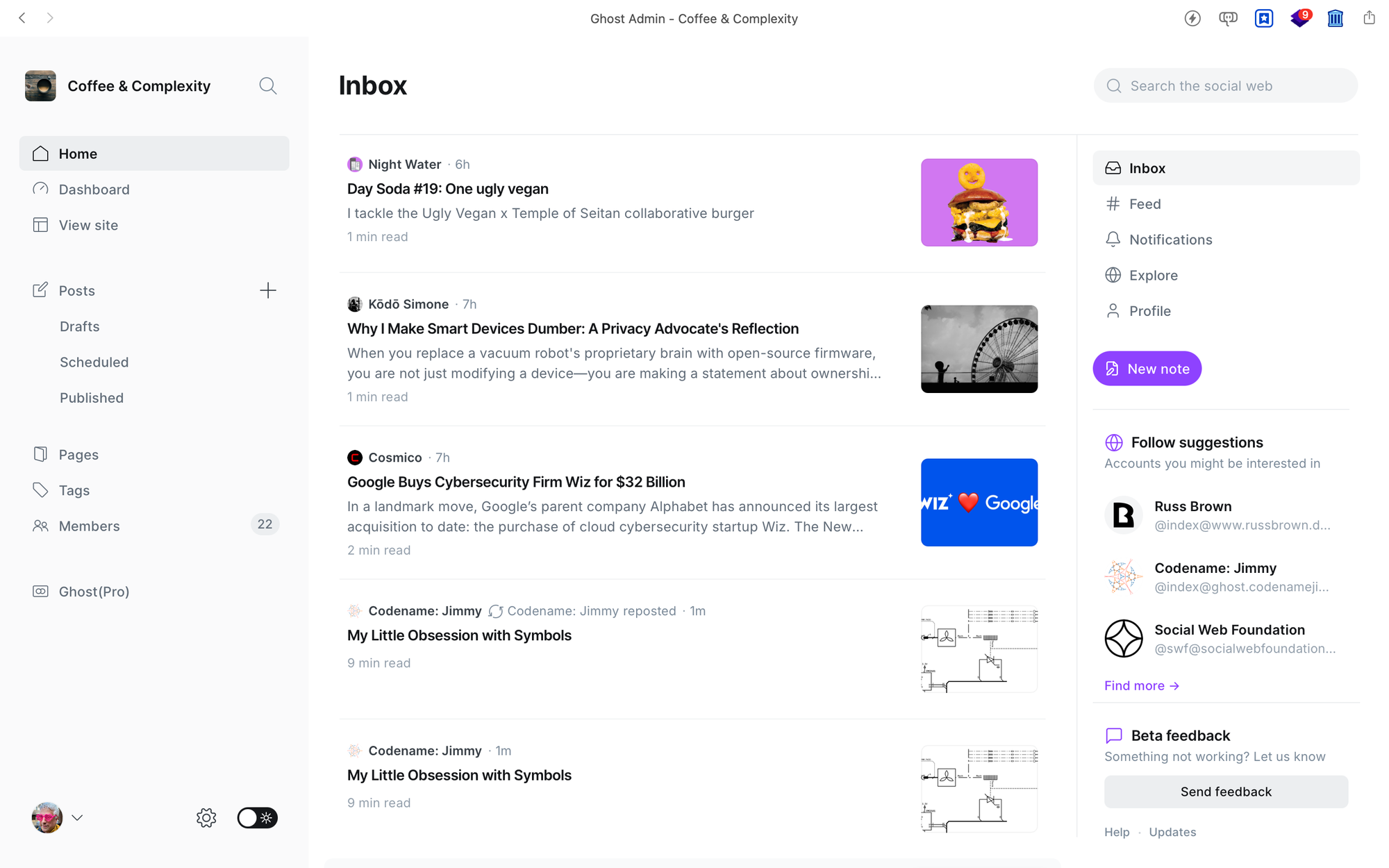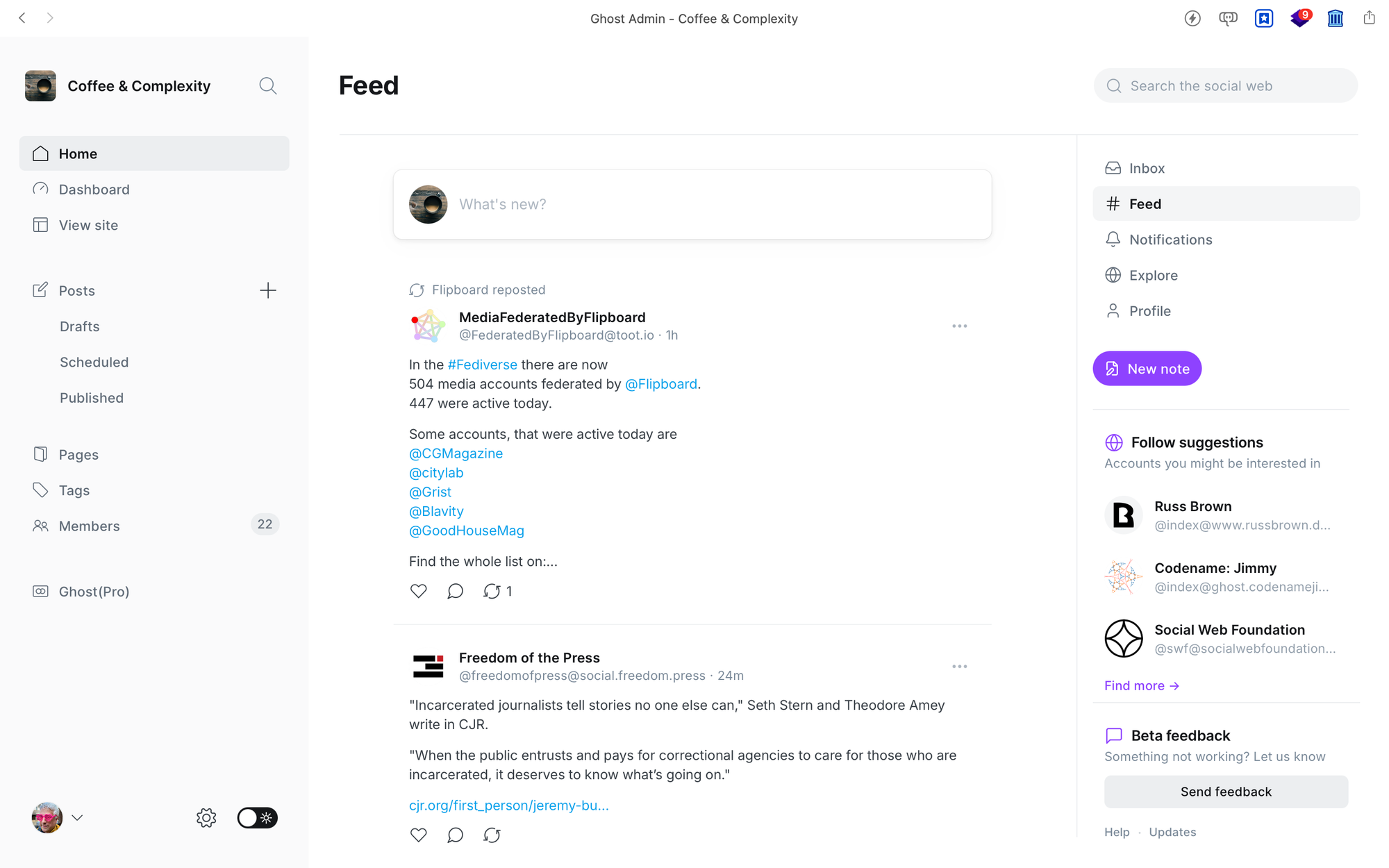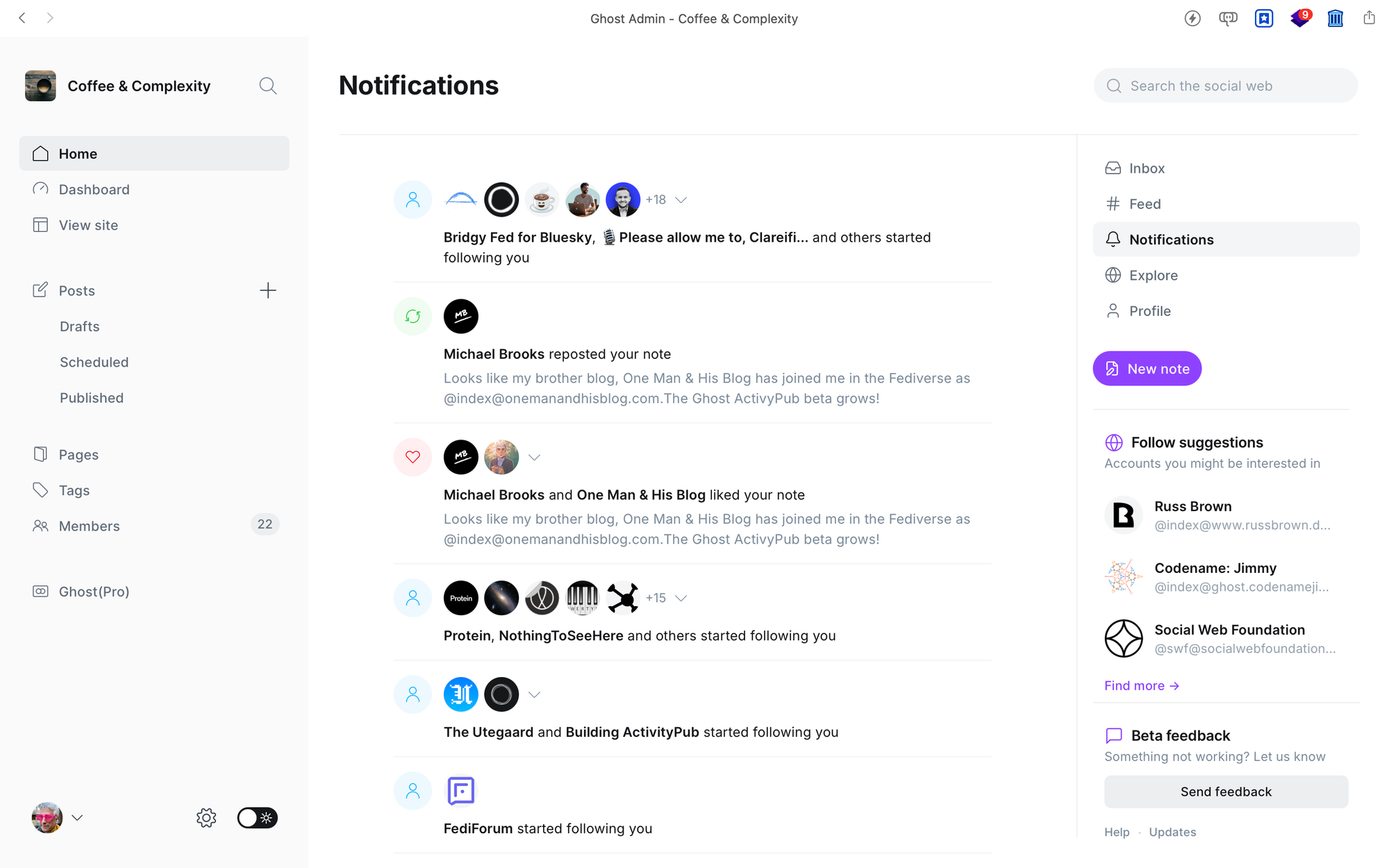The web just got a little bit more social
Why Ghost's ActivityPub Beta matters, even if you don't undertand the first half of this sentence.

A little over 23 years ago, I did something that would change my life together. After an invite from a friend in the tabletop RPG-writing community, I put finger to keyboard and wrote my first “blog” post – on Livejournal.
It’s been a very long time since I used Livejournal, which has been a few changes of ownership since that first post of mine: from its founder Brad Fitzpatrick to long-forgotten blogging startup Six Apart to a Russian company… But the Russia-centric remains of the site are not its true legacy. Instead, it was a feature that made it stand out from the other early blogging platforms: the Friends page. It was a place for posting, and a place for reading. This was such a compelling proposition, that one university student user of the service nicked it and added to his own nascent online service.
That student user’s name? Mark Zuckerberg.
And that was the problem. The two elements that made up Livejournal separated. Blogs were blogs, websites in their own right, that you could only aggregate through a tech that was obscure to many: RSS. Meanwhile, the social networks that steamrollered the blogging world adopted that idea of read/write environments and stole all our attention.
It's time to steal it back.
Bringing the social back to the web
The reason I’m digging up this ancient history is that, right now, in the back end of this very blog, I can both write posts, and read content from others. And I can even create short, Twitter-like posts that will be pushed to Mastodon – and other places, too. An old idea, the one that was at the heart of Livejournal 25 years ago, has been reborn in a new form: Ghost has released the public Beta of its ActivityPub implementation.
What the hell, you might ask, is ActivityPub?
I'm glad you asked. (This is a lie.)
Right now, answering this question is a bit like trying to explain HTTP to someone who has never used a website. Most people have never heard of ActivityPub. And, if they have, they see it as the protocol underlying Mastodon, the confusing, techie competitor to X/Twitter. You know, like Bluesky or Threads, but for geeks.
But that’s not what it really is.
It’s a mechanism for telling services that can read published digital content that now content is there, and for reader services to ingest it and show it to you. And then for you to do all the things we’ve come to expect from social media: like it, comment on it, share it.
Instead of a social network being on the web, the web becomes the social network.
This is a Big Idea.
A Ghost of an idea
Although this has just gone into public beta for ghost(pro) users, I’ve been playing with it here for some months, as one of the first wave of private beta testers.
That’s why my site has ended up in one of the demo videos(!):
During that phase, two distinct things have been going on:
- The Ghost team have been implementing the technical bits of ActivityPub into the Ghost software. That looked hard. It sounded hard. I'm very glad that, as a non-coder, that was not my problem.
- They’ve been figuring out what the interface should look like, when you’re sharing a mix of long-form and short-form content. This is the really interesting bit. This is figuring out the use case.
And that latter stage has reached the stage where there are three main elements:
- The in-box, where long form content (blog posts, news articles) live. This of it as a bit like an RSS reader, or an inbox just for editorial newsletters.
- The feed, where short-form, microblogging (Twitter) content lives, and where you can post that content.
- Notifications, where you’re informed about new likes, follows, etc.
Here’s a gallery of those elements:



Familiar, and yet new. Taking some old ideas and rebirthing them in a fascinating new way. This makes me excited about the web in a way I haven't been for 15 years or so.
The future’s bright, the future’s social
Still, this is very early days stuff. And Ghost is only one player here. There’s Mastodon, and FlipBoard, and WordPress. Another blogging service I use, micro.blog, has had ActivityPub integration for a while. And then there’s Pixelfed, an Instagram competitor, built on ActivityPub.
I suspect what we’re evolving towards is multiple ways of creating, sharing and viewing ActivityPub content in different services and apps – without you ever needing to know the word “ActivityPub”. How many people who send emails each day have heard of SMTP or IMAP? How many podcast listeners know what RSS is? Yet, in each case, those are the core underlying technologies.
If this works out, we won’t need to understand ActivityPub. We’ll just have a growing expectation that the web is a social place where you can follow people across sites and services, and post with the expectations that people will follow you elsewhere. We’re social creatures. Taking one of the great human inventions, and making it social feels natural. It feels right. And making that ability to be social ubiquitous, rather than locked up in a series of silos owned by Mark Zuckerberg and Elon Musk, feels necessary.
Given how bad the social media silos have been for our societies, I truly hope this works. It’s like I got Livejournal back – but better.
And less likely to be sold to the Russians…




